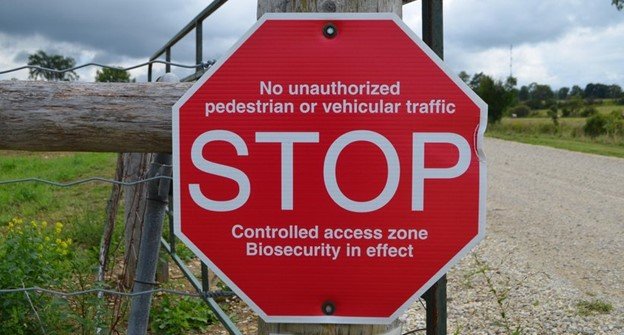
Published on March 21, 2022
HPAI: Know the causes, know the signs, and be prepared
Highly Pathogenic Avian Influenza (HPAI) cases are on the rise and have already been logged in wildfowl and commercial poultry flocks around the globe. Due to bird migration and previous outbreak patterns, it is likely that the disease will continue to be a challenge for the poultry industry this year.
The best way to protect your flock is to understand the causes and implement preventative measures via biosecurity. The best way to limit the spread is to understand the signs and symptoms and train your staff on what to do if you suspect your flock has been impacted.
Direct Causes: Wild Birds
Though they are immune to its effects, wild birds are known carriers of multiple strains of HPAI and are one of the largest risk factors.
Protective actions:
To help prevent contamination from wild birds, put these steps into action:
- Avoid elements that attract wild birds such as spills under feed bins
- Ensure windows and doors are sealed or have netting around them
- Enforce and ensure all workers are practicing proper biosecurity protocols
Indirect Causes: Contaminated Feed, Water, Clothing and Equipment
Contamination can happen if fecal matter from wild birds enters your farms via a carrier, such as through your water source, human’s or shared equipment.
Protective actions:
To help prevent indirect contamination implement these measures:
- Ensure your water is being sanitized properly
- Ensure all farmworkers change boots and wear protective coveralls when entering barns
- Clean and sanitize equipment frequently and avoid sharing equipment between barns
Be Aware of the Signs
Despite having a robust biosecurity process and implementing the above protective actions, it is still possible that HPAI can infect a flock. In these instances, it is important to be aware of the early signs and symptoms so you can take the necessary actions to minimize the spread. Birds infected with the HPAI virus may show one or more of the following signs:
- Lower water consumption
- Increased mortality
- Lack of energy and appetite
- Decreased egg production
- Soft-shelled or misshapen eggs
- Swelling
- Purple discoloration
- Nasal discharge, coughing, and sneezing
- Lack of coordination
- Diarrhea
In case of a concern, call your vet to organize testing and the next steps.
Summary
Highly pathogenic avian influenza (HPAI) is and continues to be a significant threat to the turkey industry. With the recent number of instances detected, it is important to review biosecurity practices and remain alert to protect your flocks from this disease. To learn more about biosecurity best practices and other turkey management tips, visit our resource pages.
For updates on avian influenza, biosecurity resources, and more, visit the USDA website.



